FBS 10 LECTURE 1A - Diversity and Growth Forms in Tropical Rainforests
1/117
There's no tags or description
Looks like no tags are added yet.
Name | Mastery | Learn | Test | Matching | Spaced |
|---|
No study sessions yet.
118 Terms
Forest
Size of a football field
Forest
As tall as an adult giraffe
Forest
Hides 1/10th of visibility when looking up the from the forest floor
Ecosystem
defined by biotic and abiotic organisms in a specific area
Ecosystem
defined by how different organisms interact with one another
Forest ecosystem
defined by which plants and animals are located in it, and their relationships with each other and non-living elements around them.
Elements of the Forest
Biotic and Abiotic
Percentages forests cover
30% of Earth's land surface area and 80% of the world's terrestrial biodiversity
Rainforest
Oldest living ecosystem
Rainforest
6% of all forest types but is incredibly diverse and complex, home to more than half of the world's plant and animal species
Rainforest
A 10-square-kilometer patch can contain as
many as 1,500 flowering plants, 750 species
of trees, 400 species of birds and 150 species
of butterflies.
Tropical rainforest
mainly found where the climate is hot and humid
(wet) throughout the year.
Tropical rainforest
located near the equator where there are very few seasonal changes
Tropical rainforest
between latitudes 23.5 N and 23.5 S
Location of Tropical rainforests
Tropic of Cancer and Tropic of Capricorn
Ample sunlight and moisture
essential building blocks for tropical rainforests' diverse flora and fauna.
Three largest tropical rainforests
Amazon, Congo River Basin, New Guinea
Tropical rainforests
the most biologically
diverse terrestrial ecosystems in the world, with many rare, endemic and endangered plant and animal species.
Tropical rainforests
About 50% of the world's species can be found in
TRFs, with an estimated 40 to 100 or more
different species of trees present per hectare
Amazon Rainforest
Largest tropical rainforest in the world, over 800 million years, spanning nine countries
Amazon Rainforest
Lungs of the earth, world's biggest supplier of oxygen
Nine countries covered by the Amazon
Bolivia, Brazil, Colombia, Ecuador, French Guiana, Guyana, Peru, Suriname, Venezuela
Brazil
Country containing 60% of the Amazon
North Sierra Madre
harbors the largest contiguous tracts of remaining rainforests in the Philippines
Nature of tropical rainforests
Condominium
Layers of the forest
Emergent, Canopy, Understorey, Forest floor
Emergent
trees are spaced wide apart, with umbrella-shaped canopies growing above the forest
Emergent
Exposed to dry winds; have small, pointed leaves
Emergent
Have straight, smooth trunks with few branches; some species lose leaves during the brief dry season
Emergent
Very shallow root system, but grow buttresses (spread out up to 30ft) to support their size
Red Lauan / Shorea Negrosensis
Oldest and largest tree in the Bicol region
Canopy
It blocks winds, rainfall, and sunlight creating a humid, still, and dark environment below
Canopy
The damp environment in this layer has caused trees to adapt by producing glossy leaves with pointed tips that repel water
Canopy
Plants in this layer encase their seeds in fruit as wind is lacking for dispersal unlike the layer above.
Canopy
Where most of the rainforest's animals live due to plenty of food being available
Fig trees
Most familiar fruit tree in the canopy
Understory
Also known as the lower canpoy
Understory
Made up of the trunks of canopy, trees, shrubs, and small trees and plants
Understory
Layer wherein there is little air movement and humidity is constantly high
Understory
Layer in the tropical rainforest that is in constant shade
Forest floor
Layer in the TRF that is usually completely shaded, except where a canopy tree has fallen and created an opening
Forest floor
Layer wherein there is sparse plant growth due to it receiving less than 1% of the light that strikes the top of the forest
Forest floor
Layer wherein the top soil is very thin
Forest floor
Layer where many litter falls are quickly broken down by decomposers and heat/humidity which are quickly absorbed by the shallow roots
Decomposers + Head/Humidity
Breaks down litter falls in the forest floor
Unique growth forms in the TRF
Trees, Shrubs, Epiphytes, Stranglers, Vines, Lianas, Herbs, and Palms
Nature of TRFs
High Biodiversity (
up to 10,000 species/ha)
Nature of TRFs
Short nutrient cycle
Nature of TRFs
Microclimate: Humid and Warm
Nature of TRFs
Highest biomass, Net Primary Productivity, and Nutrient uptake of world eco-regions
One of the megadiversity countries; 1/10 of the total number of species
Philippines
Global biodiversity hotspot; biologically rich country, sheltering large number of endemic species threatened by various pressures
Philippines
Philippines' Biological Richness
Ten times the Galapagos
Approximate number of Flora species in the Philippines
14,000 species (5% of the world's flora)
Number of genera of flowering plants and ferns endemic to the Philippines
26
Philippine flowering plant endemism percentage
45% - 60%
Number of species of angiosperms
8000
No. of species of gymnosperms
33
No. of pteridophytes
1,100
No. of bryophytes
1,271
No. of fungi and molds
3,550
No. of algae
1,355
No. of lichens
79
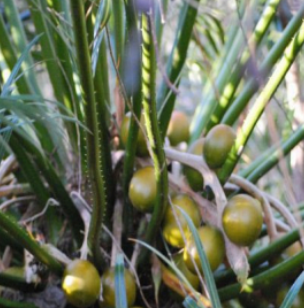
Gynospems in TRF (C)
Cycas
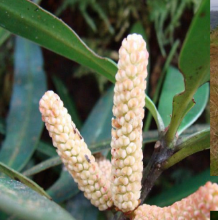
Gymnosperms in TRF (P)
Podocarpus
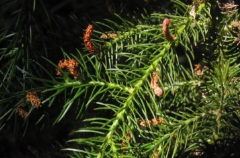
Gymnosperms in TRF (D)
Dacrycarpus
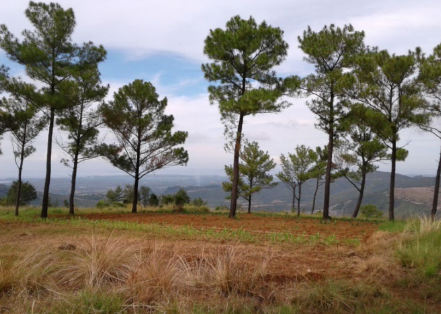
Gymnosperms in TRF (PM)
Pinus Merkusii
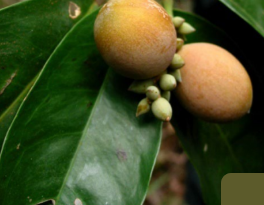
Gymnosperms in TRF (G)
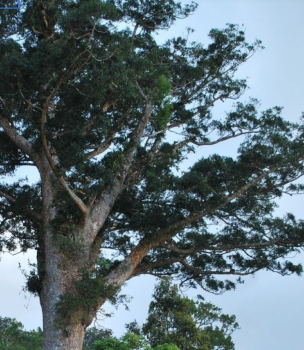
Gymnosperms in TRF (AP)
Agathis Philippinesis
Epiphytes
Unique growth forms in TRFs growing on branches of trees for support extracting moisture from the air and trapping the constant leaf-fall and wind-blown dust

Philippine Orchids
Aerides
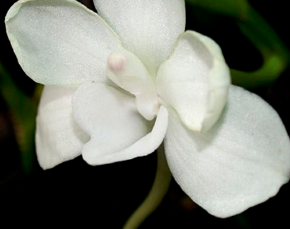
Philippine Orchids
Amesiella

Philippine Orchids
Paphiopedilum
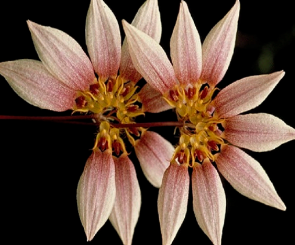
Philippine Orchids
Bulbophyllum

Philippine Orchids
Calanthe
Nepenthes
A genus of rosette-forming, shrubby to scrambling or vining carnivorous plants that alone comprises the family Nephenthaceae
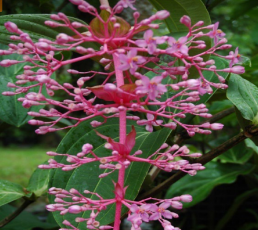
Philippine Medinilla
Lianas and Stranglers
Unique growth forms in TRFS that are woody vines growing rapidly up the tree trunks when there is a temporary gap in the canpy.
Epiphylls
Unique growth forms in the TRFs that are plants growing on the leaves of another plant
Liverworts and Lichen
Example of Epiphylls
Ecological interaction
Competition for light with the leaves that support them
Lichens
Unique growth forms in the TRF that are unique double organisms consisting of alga and/or cyanobacterium and fungus
Photobiont and Mycobiont
Organisms that make up lichens
Photobiont
Cyanobacterium
Mycobiont
Fungus
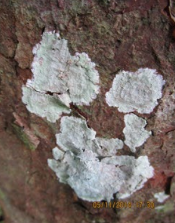
Type of Lichen
Cryptothecia sp.
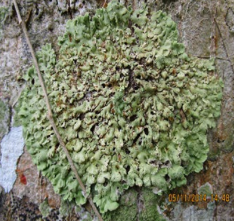
Type of Lichens
Dirinaria sp.

Type of Lichen
Usnea sp.
Heterotrophs
Unique growth forms in the TRF are non-photosynthetic plants that can survive on the forest floor
Parasites
organisms that derive nutrients by tapping into the roots or stems of photosynthetic species
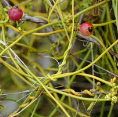
Heterotrophs (Parasite)
Love Vine (Cassytha filiformis)
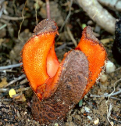
Heterotrophs (Parasite)
Jackal food (Hydnora africana)
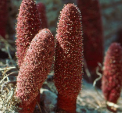
Heterotrophs (Parasite)
Red thumb (Cynomorium ccocineum)
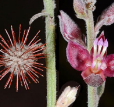
Heterotrophs (Parasite)
Krameria Ixine
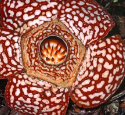
Heterotrophs (Parasite)
Rafflesia pricei
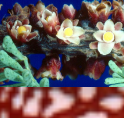
Heterotrophs (Parasite)
Pilostyles thurberi

Heterotrophs (Parasite)
Cytinus ruber
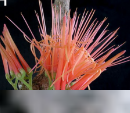
Heterotrops (Parasite)
Amyema artensis

Heterotrops (Parasite)
Yakkoso (Mitrastemon Yamamotoi)
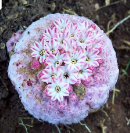
Heterotrops (Parasite)
Pholisma culiacanum